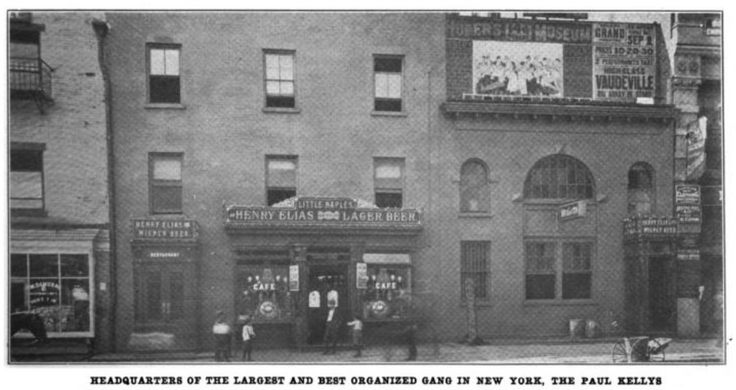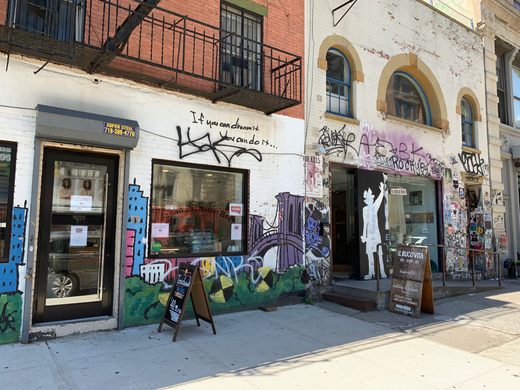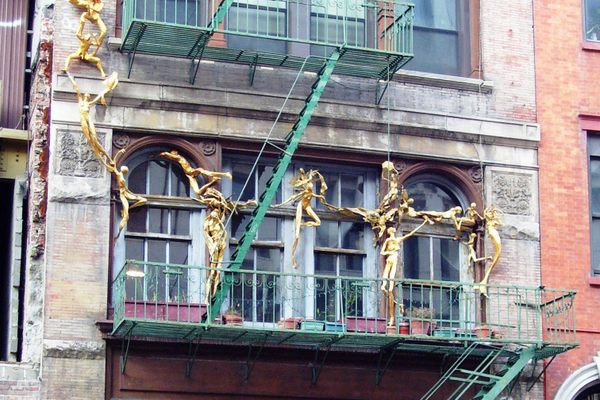The Former New Brighton Athletic Club
These historic buildings once housed the headquarters of one of the most infamous gangs of New York.
Judging from its swish-sounding name, the New Brighton Athletic Club brings to mind the sort of exclusive, private member’s racquet clubs found in midtown Manhattan. In reality, it was one of the seediest, deadliest dance halls and drinking dens of the Lower East Side, the former headquarters of the lethal Five Points Gang.
Located on Great Jones Street between Lafayette and the Bowery, the New Brighton Athletic Club was created by one of the last great New York gang leaders, the original Dapper Don, Paul Kelly. An Italian immigrant to New York in the 1890s, and a boxer of some repute, Paolo Antonio Vaccarelli adopted the more Irish sounding name of Paul Kelly to secure more boxing matches. Under his new alter ego, he formed the notorious Five Points Gang out of the remnants of the old Dead Rabbits and Whyos gangs. Kelly was permanently dressed in an elegant style, reputedly never swore, spoke five languages, and was as deadly as they came. According to the New York Herald journalist Richard Harding Davis, Kelly was, “exquisitely scented, wearing silk socks, silk ties to his tan shoes, with rings on his well-kept fingers…”
Operating out of converted stables on Great Jones Street, Kelly opened the New Brighton Athletic Club in 1904. The two interconnected buildings at numbers 57 and 59 had a dance hall, saloon, and one of the cities premier bare-knuckle boxing rings. With around 2,000 members, the Five Points gang terrorized the Lower East Side, ran prostitution and racketeering rings, and violently impressed voters for Tammany Hall come election time. One of New York’s last legendary gangs of the early 20th century, it counted amongst its members the young Al Capone and Lucky Luciano. The Five Pointers great rivals were the Eastman Gang, run by Monk Eastman. The Five Pointers ran everything west of the Bowery while Monk Eastman controlled crime to the east. Following a running gun fight under the Second Avenue elevated railroad, Tammany Hall called for the rival gangs to settle their feud with a boxing match between Kelly and Eastman. The fight ended in a tie and the gangs resumed their territorial war. Eastman was finally convicted for robbery and Tammany Hall, keen to end the violence of the Lower East Side, withdrew its protection and Eastman was sent up river to Sing Sing. In 1908, an assassination attempt on Kelly at the New Brighton drew further bad publicity, and Police Commissioner William McAdoo closed the infamous club for good.
For all his violent past, the dapper Paul Kelly saw out his days as a union worker for the Longshoremen, dying of natural causes in 1936. The building which housed his former nightclub was bought by Andy Warhol, where it was used as an art studio by Jean-Michel Basquiat, who died of a heroin overdose in the upstairs rooms in 1988.
Today 57 Great Jones Street is home to the secretive Bohemian Japanese restaurant. One of the most mysterious restaurants in the city, it only accepts reservations if you have a referral from a previous guest. No.59, once home to New York’s last great gang, lies empty and abandoned.





















Follow us on Twitter to get the latest on the world's hidden wonders.
Like us on Facebook to get the latest on the world's hidden wonders.
Follow us on Twitter Like us on Facebook